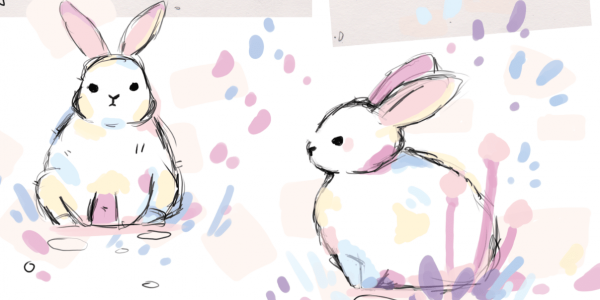research:
principles of animation
SQUASH AND STRETCH:
Squash and stretch is the principle where animated objects of characters get longer or flatter to emphasise their speed and exaggerate their action. The speed can build up a character’s velocity and add a weight and mass. The amount that the object or character squashes or stretches says something about its mass, having less squash and stretch can make the animation become stiff whereas having a good amount of squash and stretch can
make the object or character softer. Squash and stretch applies to facial expressions on characters, this is to exaggerate their emotions. This is also applied towards a bouncing ball as it gives the ball more realism because in real life physics takes place with gravity creating motion in the ball as it hits the floor. Although when animating with squash and stretch it is important to keep the volume consistent because as the ball gets longer it gets narrow and when it gets flatter it gets wider.
POSE TO POSE:
Pose to pose animation is where you draw the beginning middle and end of your animation, then you go back and fill in the in-betweens at each part. This type of animations allows you more control showing a good idea of what it is going to look like in the early process. Essentially it decides where the character leads at the start of the animation to the ending. Pose to pose can overall save a lot of working time. When animating using pose to pose, there are main vocabulary’s which are known as keys and secondary poses called extremes and further broken-down poses called breakdowns.
ARCS:
Arcs are the follow-through of normal motion this form of motion makes the animation look less mechanical using arcs. It is important to understand the slow in and out of gravity, forgetting to use an arc can result in the drawings shrinking but using arcs helps to figure out the animations movements such as when a ball bounces having the ball move up . The bounce with a triangular arc would result in a mechanical presence but curving the arc to
make it more round can allow the ball to curve/ in a circular manner since the movement looks more natural this way. Once the in-betweens have been drawn in altogether, circular movement looks more realistic. Arcs can also help form smears when animating a fast action.
TIMMIMG:
Timing is the action used in which determines the speed of the animation. It is greatly affected by the number of frames included between each main action, this results in two different slow and fast actions in the animation. The more drawings that is included in between the two main poses that are close together, the action of the animation will result in being slow. Although if there are very few drawings in between the two main poses that are far apart the action will result in being fast. Having just one simple action in the timing
can impact the animation greatly by adding so many different meanings too that one simple action.
Within timing the usual frame rate is 24 frames per second. There are different definitions for drawing of these frames, an example of this would be if one drawing is made for every frame it’s called drawing on ones, this results in a very fast action. If u have two for every frame it is called drawing on twos, this results in the actions being slower but smoother and so on. For drawing on threes every frame in the drawing used can result in the animation looking different.
stop motion and animation-slow, medium, fast (click to see)
ball bounce animation (click to see)




